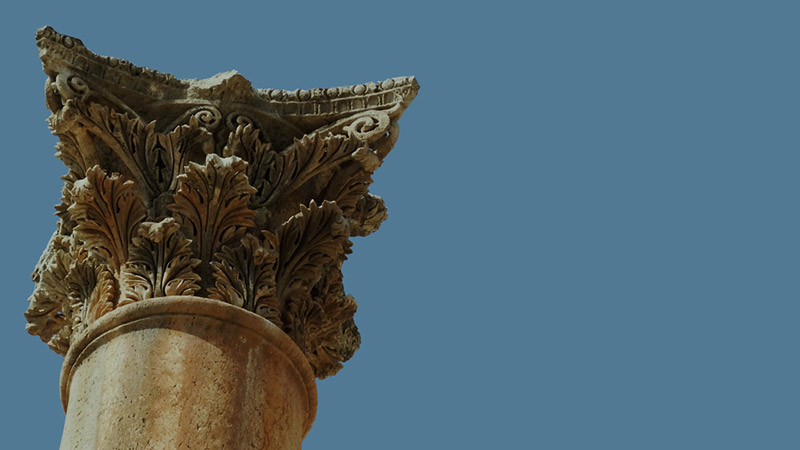More Results
Showing 12 of 251
Articles

Joy of Living Water
THE JOY OF LIVING WATER: JESUS AND THE FEAST OF SUKKOT' With joy you will draw water from the wells of salvation. (Isa. 12:3)Water was of great importance to the people of the Bible. They lived in a dry country, completely dependent on the season...
MOREEncyclopedia

Jerusalem: Hezekiah's Water System
The main water supply for the city of Jerusalem was the spring of Gihon, which flowed out of a cave on the eastern side of the hill on which the city stood. The Hebrew word means "gushing out" and was given because the spring does not ha...
MORE
Jerusalem: The Eastern Gate
This gate was built in the sixteenth century, long after New Testament times. Several years ago, the Herodion remains were accidentally uncovered below this gate, indicating that it was probably built over the one used when Jesus visited the templ...
MORE
Jerusalem: The Southern Stairs
This photograph shows the southern stairs as viewed from the west, looking onto the stairs and Herod's massive Temple.On the right side of the photo is a straight joint in the wall. This is the beginning of Herod's extension of the Mount to the so...
MORE
Jerusalem: The Temple Mount Colonnade
The enormous Temple Mount of Herod had a 45-foot-wide colonnade around it. The eastern colonnade was called Solomon's Colonnade and was used by Jesus and the early Christians as a place of meeting and teaching. More than 40 feet high, the roof of ...
MORE
Jerusalem: Western Wall
This section of the Temple Mount Wall dates from the time of Herod. The Temple stood on the floor above the wall shown here. This particular wall would have been more than 40 feet above the street in Jesus day. The Roman destruction of the Temple ...
MORE
Jerusalem: Wilson's Arch
Located below the Old City of modern-day Jerusalem, Wilson's arch extended high above the street in Jesus' time. The arch supported a bridge across the Tyropean Valley from the Upper City on the Western Hill.Like Robinson's Arch (both of these we...
MORE
Jesus in the Synagogue
Jesus spent a lot of time in synagogues (Matt. 4:23). He taught in them (Matt. 13:54), healed in them (Luke 4:33'35; Mark 3:1-5), and debated the interpretation of Torah in them (John 6:28-59).His life seems to have followed Jewish education patte...
MORE
Jesus the Rabbi
The term rabbi in the time of Jesus did not necessarily refer to a specific office or occupation. That would be true only after the Temple in Jerusalem was destroyed (70 AD). Rather, it was a word meaning great one or my master which was applied t...
MORE
Jewish Feasts
Jewish Feasts In the Old Testament, God instituted a religious calendar for the Israelites to follow. Within each year, there were seven specified feasts (Lev. 23), four in the spring and three each fall. Through these feasts, the Jewish people ce...
MORE
Jewish Revolts
The Revolt Begins In AD 66, a Gentile in Caesarea offered a pagan sacrifice next to the synagogue's entrance on the Sabbath. Jewish citizens protested, so Jerusalem authorities ended all foreign sacrifices in the temple, including those to Caesar....
MOREGlossary

Josephus Definition
Jewish historian named Josephus Flavius, author of four major extra-biblical texts of Jewish life and culture. Born to a preistly family about the time of Jesus' death, he died approximately 100 AD; he was a Galilean commander in the First Jewish ...
MORE

















